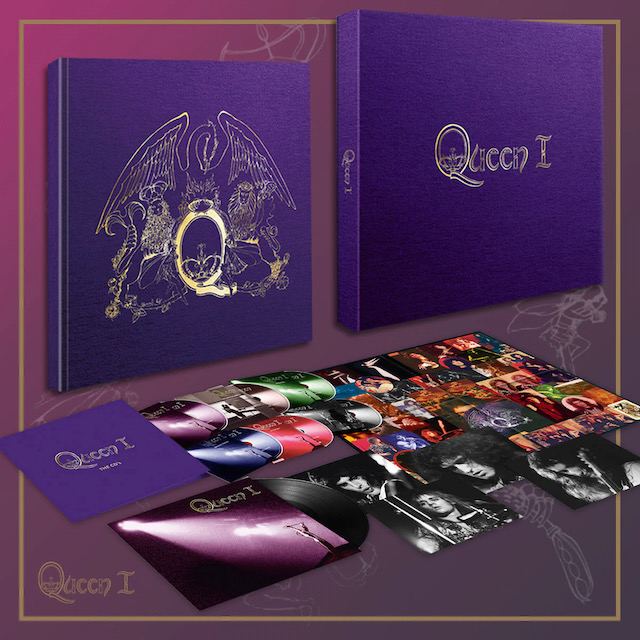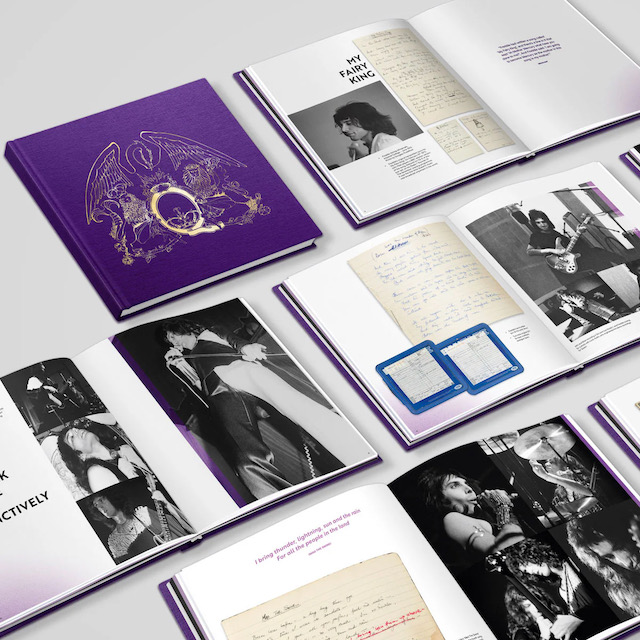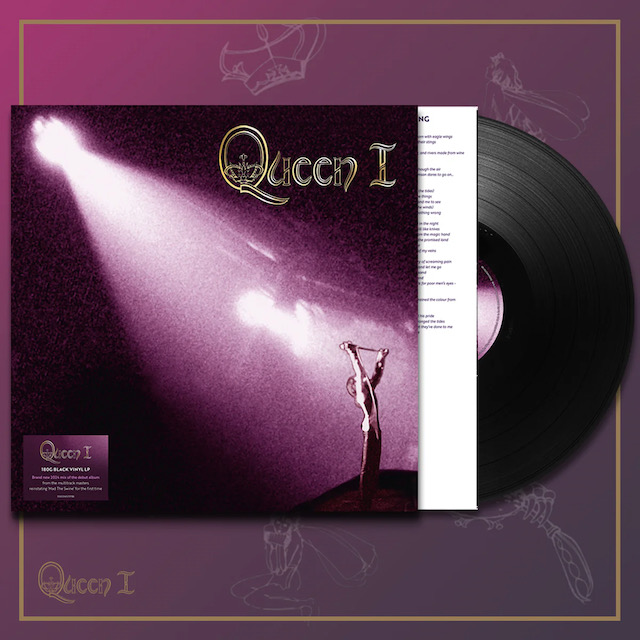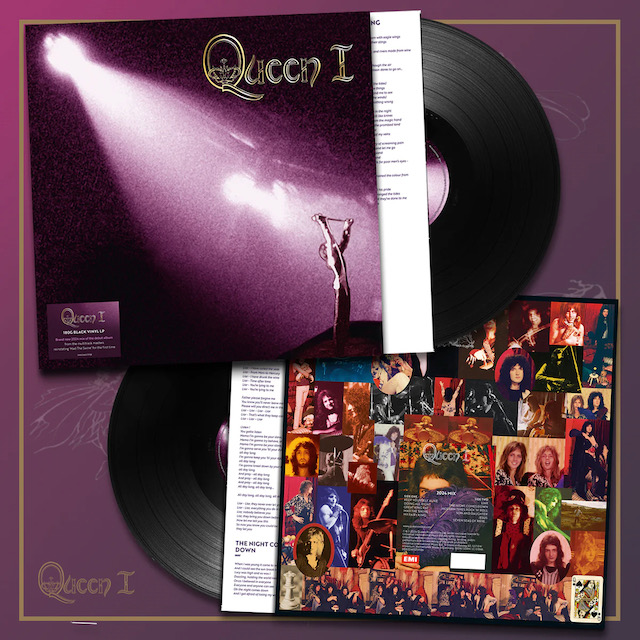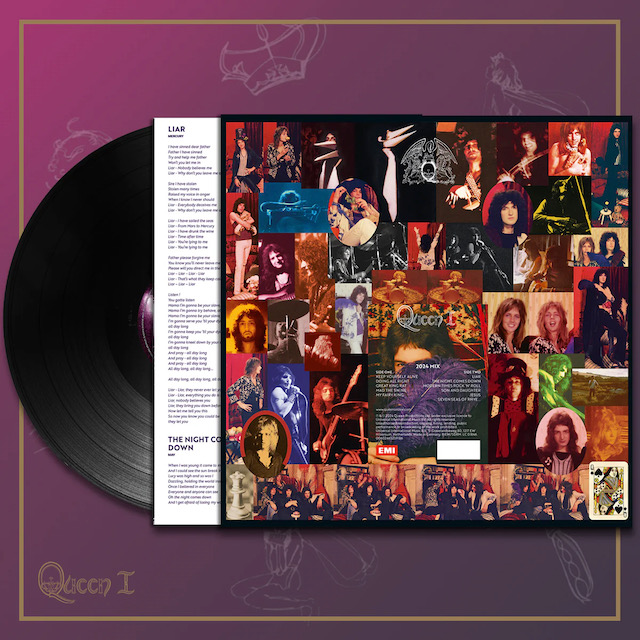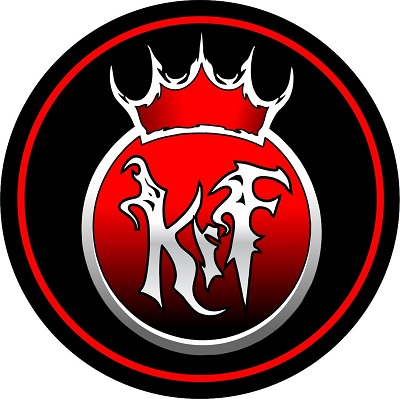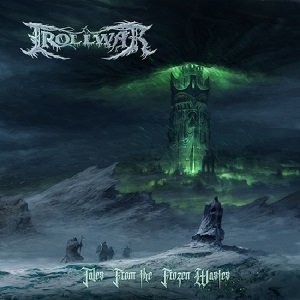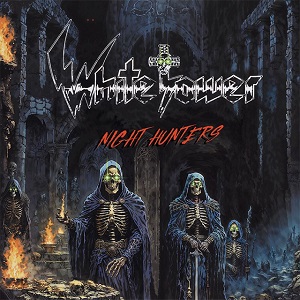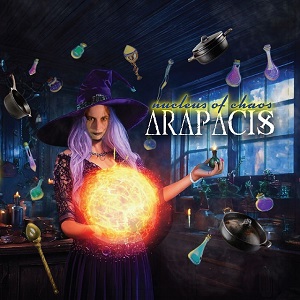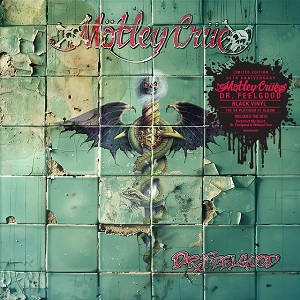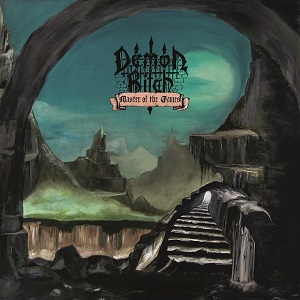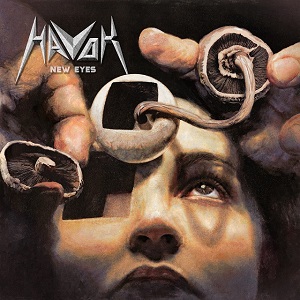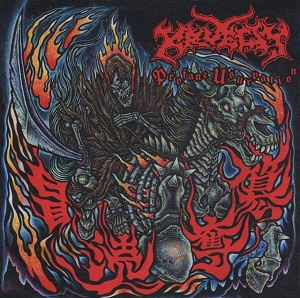QUEEN - Queen I: Collector's Edition 3D Unboxing Video Posted
September 20, 2024, 3 months ago

Queen have released a 3D unboxing video for the collector's edition of their upcoming Queen I box set, out on October 25. Watch below:
Queen recently released a brand new music video for "The Night Comes Down", a timeless track from their debut album.
The video features classic images of Queen from the early 1970s, but following a collaboration with an artist specializing in AI, some of those images have been given a whole new dimension. Hopefully, the end result is a sense of what it was like being around the band as their extraordinary journey began.
“The Night Comes Down” is the first single taken from Queen I, a remastered, remixed, expanded 6-disc box set of the band’s ground-breaking debut album, Queen, and one of the earliest of the band’s recordings to ever appear on an official release. The track is released physically on 7” on October 4 , shortly ahead of the anticipated Queen I box set release on October 25.
Among the band’s legendary tracks, Brian May’s tenderly nostalgic confessional pointed gracefully towards Queen’s future. The glinting guitars of the opening herald a display of Brian’s innovative and layered style, set to become a key element of Queen’s dramatic, grandiose, and orchestrated sound.
Between Freddie Mercury’s exquisite falsetto, John Deacon’s rippling bass, Roger Taylor’s attentive percussion and Brian’s deeply sensitive playing, the young band were here discovering a voice all of their own.
Physical 7” single is set for release on October 4. Pre-order here.
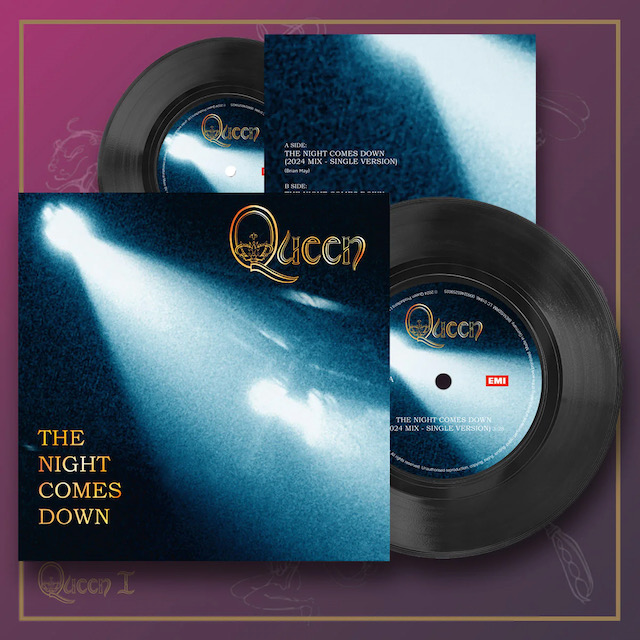
"The Night Comes Down" 7” single tracklisting:
A: "The Night Comes Down" (2024 Mix - Single Version)
B: "The Night Comes Down" (Backing Track)
Over half a century since its release and a vital chapter in the band’s story, Queen’s self-titled 1973 debut album has been remixed and restored by Justin Shirley-Smith, Joshua J Macrae and Kris Fredriksson to sound the way the band always wanted it to. A new tracklisting, alternative takes, demos and live tracks have now been added to create the most complete version of this pivotal work. This is the very first time that a Queen album has ever received a new stereo mix.
The 6CD + 1 LP Queen I box set contains 63 tracks with 43 brand new mixes, comprising the original album with its intended running order restored, intimate fly-on-the-wall audio of Queen in the studio, demos, rare live tracks, and previously unheard recordings from Queen’s first-ever live performance in London, August 1970. Absent from the 1973 release, the song “Mad The Swine” has been reinstated to its original place in the running order. A 108-page book containing handwritten lyrics and memorabilia accompanies the release.
“This is not just a remaster,” writes Brian May in the CD sleeve insert notes, “this is a brand new 2024 rebuild of the entire Queen debut album, which, with the benefit of hindsight, we have re-titled Queen I.”
May continues, “All the performances are exactly as they originally appeared in 1973, but every instrument has been revisited to produce the ‘live’ ambient sounds we would have liked to use originally. The result is “Queen“ as it would have sounded with today’s knowledge and technology – a first.”
“Queen I is the debut album we always dreamed of bringing to you.”
Queen began life in early summer 1970, but took their first steps in the studio after vocalist Freddie Mercury, guitarist Brian May and drummer Roger Taylor recruited bass guitarist, John Deacon, in July 1971.
“The first three years were really faith and fumes,” says Roger Taylor. “We were penniless but we had a lot of belief in ourselves and a lot of energy.”
While Queen struggled for recognition, their music and stage act were developing. If their previous band Smile were a band for the late 1960s, then Queen’s sound and image was about the here and now and tomorrow. Their songs were already filled with huge riffs, choral harmonies and classical flourishes.
After John Deacon’s arrival, Queen secured a production, song publishing and management deal with Trident Audio Productions. Having heard the band’s demos, the company’s owners, brothers Norman and Barry Sheffield, agreed to fund the recording of Queen’s first album, which they would then shop to potential record companies.
The Sheffields also owned Trident Studios, a state-of-the-art facility in London’s Soho, which had been used by Elton John and The Beatles and was rarely available to young, unsigned bands. Trident’s popularity was such that the studio was usually fully booked during the day, meaning Queen could only record during what was known as ‘downtime’, those rare moments when the studio was empty, usually at night.
Queen began work on the album in May 1972 and spent the next four months living a fractured, nocturnal existance. Evenings would be spent waiting around Soho until the studio was ready. An exhausted Queen would emerge from Trident several hours later.
“We’d work through the night and usually until 7am when the cleaners came in,” recalls Brian. “It was us just grabbing little bits of time.”
Says Roger: “You know, we just came in there right after Bowie had done Hunky Dory and Rise and Fall of Ziggy Stardust and he did both of those albums back to back, two great albums. So, we were very pleased to be there, but when we were there, we’d arrive at three in the morning and then go on, for all the hours that we could grab. It was just a grind. I wouldn't say it was soul destroying because we were quite confident. We had a sort of innate, gentle arrogance, you know, we thought we were good and quite different.”
Queen recorded the album with Trident’s in-house co-producers, John Anthony and Roy Thomas Baker. Both were staunch advocates of Queen and had been instrumental in the band signing with Trident. However, the group quickly ran up against the studio’s rules and regulations.
Says Brian: “Although we had great technology around us, we really didn’t have much freedom to use it. We were regarded as the new boys who didn’t know anything, and nobody really wanted to listen to the way we wanted to do things.”
While relatively inexperienced, Queen already had a clear musical vision. However, the huge guitar and drum sounds they heard in their heads proved difficult to recreate at two o’clock in the morning and on the studio’s in-house perspex drum kit rather than their own.
Says Roger: “They had this very dead drum sound, and it was never the sound we wanted. They had a drum booth, and it was a well known sound. It was kind of American. Very dry, quite fat, dead sound, which is not what I wanted. I wanted to hear the drums resonate, to hear the sound of the drum. I didn't even have my proper kit in there. It was a bit rough really. So the album never sounded as we wanted it to.”
“We wanted everything to sound like it was in-your face,” says Brian. “We had this incredible fight to get the drums out of the booth and into the middle of the studio and put the mics all around the room.”
But that wasn’t Trident’s way. “I remember saying to Roy Thomas Baker, 'This isn't really the sound we want,’” continues Brian.”And he said, 'Don't worry, we can fix it all in the mix.’ And I think we all knew it ain't going to happen." Now in 2024, it has been ‘fixed in the mix’.
Queen’s frustration was compounded by the fact that the songs themselves already displayed the breadth of Queen’s ideas and vaulting ambition. “Keep Yourself Alive”, was like a rallying cry, cueing up the likes of “Doing All Right”, “Great King Rat”, “Liar”, “Modern Times Rock’n’Roll” and “Son And Daughter”.
Meanwhile, Freddie’s imagination had free rein on the biblically-inspired “Jesus” and on “My Fairy King”, where the singer (who was soon to assume the stage name ‘Freddie Mercury’) sang about “horses born with eagles’ wings” and implored “Mother Mercury, look what they’ve done to me.”
“I never knew where some of those lyrics came from,” says Roger. “But Fred was like a magpie. He had a very sharp brain.”
Crucially, this new 2024 Mix version of Queen I now includes “Mad The Swine”, a song absent from the original LP after a difference of opinion between the band and one of its producers. It is now reinstated to its rightful place as the album’s fourth song, in between “Great King Rat” and “My Fairy King”, just as Queen wanted it to be in 1972.
Despite the restrictions imposed upon them at Trident, the band still managed to break the rules. Brian’s composition (and the box set’s first single), “The Night Comes Down”, blueprinted that layered acoustic and electric guitar sound that was soon to become part of Queen’s signature. But the band insisted on using a recording from De Lane Lea Studios rather than attempt a new version at Trident. They smuggled in their demo multi-track tape in a newly labelled ‘Trident’ box in order to mix the song for the album.
CD2: De Lane Lea Demos – 2024 Mix explores Queen I’s fascinating pre-history, with brand new 2024 mixes of the demos the band recorded preceding their album. In the summer 1969, Brian and Roger’s pre-Queen group, Smile, had recorded at De Lane Lea Studios in London’s Kingsway. Two years later, the company opened a new complex in Wembley and needed a band to help them test the mixing desks and the sound quality of the different rooms.
Brian and Roger volunteered Queen, and the band spent time at the studio between November 1971 and January 1972 – “a massive thrill,” Brian recalls. They were repaid with a five-song demo, overseen by De Lane Lea’s chief engineer Louie Austin, and containing “Keep Yourself Alive”, “The Night Comes Down”, “Jesus”, “Liar”, and “Great King Rat".
“The demos we made at De Lane Lea Studios were closer to what we dreamed of,” explains Brian. “Nice open drum sounds and ambience on the guitar. That was much more the way we wanted it to go.”
“We were young and had total blind faith in what we were doing,” says Roger.
Although these demos were intended to be hawked around to procure a recording contract, the band says Brian, always felt the performances had more spontaneity and sparkle, as well as the benefit of more natural sounds compared with the final album versions. As, the only surviving copies of the mixes of the demos are on scratched acetates, here for the first time, these self-produced recordings have been restored and remixed from the original multitracks.
CD3: Queen I Sessions, and CD4: Queen I Backing Tracks, take the listener behind the scenes at both Trident and De Lane Lea studios.
CD3: Sessions collate completely different and 100% previously unreleased versions of the songs on the album. Newly created using out-takes from De Lane Lea and Trident. They feature some false starts, guide vocals, backing tracks and alternative takes, including spoken-word segments in which the members of Queen can be heard chatting and joking (“It was you Bulsara!”) and occasionally expressing their frustration. Many of the takes are built around acoustic guitar, the electric would have been added later, which gives a different feel to these versions.
CD4: Queen I Backing Tracks offers mixes of the songs from the original Queen album without lead vocals.
Queen pitched the De Lane Lea demos to several record companies but didn’t sign with any, hence their deal with Trident. The album was pretty much completed in 1972. But Queen and their producers were still arguing about the mix right up until the last day, so much so that the band chose a mix of “Keep Yourself Alive”, created with Trident’s assistant engineer Mike Stone, rather than one of the earlier versions. Mike would go on to engineer the next five Queen albums.
Trident pitched Queen’s debut to labels, and eventually signed the band to EMI in the UK and Elektra in the US. Elektra’s founder, Jac Holzman, attended Queen’s date at London’s Marquee club on April 9, 1973. The box set’s book includes an entry from Roger’s diary about the gig: “Went down a storm… Jac Holzman liked it!” Holzman circulated a memo to his staff declaring, “I have seen the future of pop music, and it’s a band called Queen.”
Queen’s debut wasn’t released until July 13, 1973 in the UK and September 4 in the US, increasing their frustration. Queen were “hugely ambitious and unashamedly so,” said Roger Taylor, and had progressed rapidly over the previous twelve months. The LP’s sleevenotes implied as much with the curt note: “Representing at least something of what Queen’s music has been over the last three years.”
EMI issued “Keep Yourself Alive” as a single a week before the album’s UK release, but radio play proved hard to come by. Someone was listening, though.
CD5: Queen I At The BBC, begins with “My Fairy King,” in a slightly different version recorded for DJ and early Queen champion John Peel’s BBC Radio 1 show Sounds Of The Seventies in February 1973, five months before the LP’s release. As no-one had heard their album yet, the band took in backing tracks and added new vocals and other overdubs for this first session. This was the first time Queen’s music had been broadcast anywhere in the world. Three further BBC sessions are preserved here, with new versions of all of Queen I’s songs broadcast by the BBC between February 1973 and April 1974.
What CD5 ‘Queen I At The BBC’ and CD6, ‘Queen I Live’, demonstrate is how these songs grew and developed away from Trident Studios.
CD6: Queen I Live distills the best performances of the first album’s songs from Queen’s triumphant March 1974 headline date at London’s Rainbow Theatre, plus several previously unreleased tracks added. These include the first official release of “Hangman”, a Free-inspired Mercury/May/Taylor/Deacon composition that was a mainstay of Queen’s early live shows, but was never recorded in the studio. This performance of “Hangman” comes from a show at the San Diego Sports Arena on the last night of the band’s US tour in March 1976.
The final songs on ‘Queen I Live’ revisit the historic moment Queen became Queen. Among the 108-page enclosed book’s many never-before-seen artifacts is Roger’s handwritten invitation to Queen’s first ever performance in London: “A private showing on Sunday August 23 [1970] at 7:30pm at Imperial College… lecture theatre A, level 5,” he writes.
Two songs from this historic show, “Jesus” and a cover of the Spencer Davis Group’s 1967 hit “I’m A Man”, have been retrieved from cassettes in the archive, and are the earliest Queen recordings in existence, even pre-dating John Deacon’s arrival in the band.
The final track on the original Queen album is the urgent-sounding one and a quarter-minute instrumental snippet of “Seven Seas Of Rhye”. The finished song wouldn’t appear until Queen II, and became a UK Top 10 hit. In a sense though, this abbreviated version’s frantic rhythms, hammering piano and orchestral-sounding guitar captures the spirit of Queen’s debut: it’s the sound of a restless, determined young band eager to take the next step.
As Freddie once said: “All of us were aiming for the top, and we weren’t going to be content or satisfied with anything less.”
Says Brian: “Freddie was so convinced that he would be successful, he never doubted it. We were all precocious boys but he was another level. But we all shared this passion. And the energy grew and coalesced into something very powerful.”
And a final thought from Roger Taylor: ”Essentially with the Queen I box set we've made the actual album sound the way we wanted it to sound using the techniques that we have now. We've made the drums sound like they should sound and, the overall sound of it is better, the mixes are better. So it's been a delight to improve it, to bring it up to where we wanted it to be.”
“I have found one thing though that has amazed me listening to this album again and again is how bloody religious some of the lyrics are, you know, it's really quite religious.”
For complete tracklistings and further details, head to QueenOnline.com.
